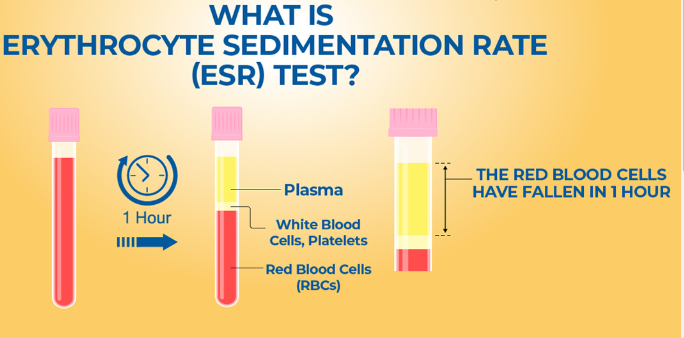Fibromyalgia is a chronic condition that causes widespread pain, fatigue, and cognitive challenges. Diagnosing and managing fibromyalgia can be complex, as there is no specific test to confirm the condition. However, certain diagnostic tools, like the complete blood count (CBC) test, play a crucial role in ruling out other medical conditions and helping doctors better understand a patient’s overall health.
In this article, we will explore how the complete blood count test is used in the context of fibromyalgia, what the test measures, and why it’s important in managing this chronic condition.
What Is a Complete Blood Count (CBC) Test?
A complete blood count (CBC) test is a standard blood test that evaluates the different components of blood, including red blood cells, white blood cells, hemoglobin, hematocrit, and platelets. It is a routine test often used to assess overall health, detect infections, and identify medical conditions like anemia or immune system disorders.
The CBC test is quick, non-invasive, and typically performed as part of a general health check or when a doctor needs more information about a patient’s symptoms.
The Role of a CBC Test in Fibromyalgia Diagnosis
While fibromyalgia itself cannot be diagnosed with a blood test, a CBC test is an important part of the diagnostic process. It is primarily used to rule out other conditions that mimic fibromyalgia symptoms. For instance:
- Anemia: Low red blood cell counts can cause fatigue, which is also a key symptom of fibromyalgia.
- Infections: Elevated white blood cell counts may indicate infections or inflammation, which are not typically associated with fibromyalgia.
- Autoimmune Disorders: Conditions like lupus or rheumatoid arthritis can cause symptoms similar to fibromyalgia and may affect white blood cell and platelet counts.
By ruling out these conditions, the CBC test helps doctors narrow down potential causes of a patient’s symptoms, making it a valuable tool in the diagnostic journey.
Components of a CBC Test and Their Relevance to Fibromyalgia
1. Red Blood Cell (RBC) Count
The RBC count measures the number of red blood cells in the blood. Red blood cells are responsible for transporting oxygen throughout the body.
- Why it matters: Low RBC counts, or anemia, can lead to fatigue, weakness, and shortness of breath. Since fatigue is a hallmark symptom of fibromyalgia, it’s essential to rule out anemia as a potential cause.
2. White Blood Cell (WBC) Count
The WBC count measures the number of white blood cells, which help the body fight infections and inflammation.
- Why it matters: Fibromyalgia is not considered an inflammatory or autoimmune condition, so elevated WBC levels may indicate another underlying issue, such as an infection or autoimmune disease.
3. Hemoglobin and Hematocrit
Hemoglobin is the protein in red blood cells that carries oxygen, while hematocrit measures the proportion of red blood cells in the blood.
- Why it matters: Abnormal hemoglobin or hematocrit levels can point to anemia or dehydration, both of which can exacerbate symptoms like fatigue and brain fog.
4. Platelet Count
Platelets are small blood cells that help with blood clotting.
- Why it matters: Abnormal platelet counts may indicate issues like clotting disorders or immune system dysfunction. While not directly related to fibromyalgia, these issues must be ruled out during diagnosis.
Why a CBC Test Alone Is Not Enough for Fibromyalgia
It’s important to note that a CBC test cannot diagnose fibromyalgia. Fibromyalgia is diagnosed based on a combination of factors, including:
- Widespread pain lasting for at least three months.
- Symptoms such as fatigue, sleep disturbances, and cognitive challenges.
- The exclusion of other medical conditions through blood tests, imaging studies, and physical exams.
While the CBC test is a valuable tool for ruling out other conditions, additional diagnostic methods, such as tender point examinations and patient history reviews, are necessary to confirm fibromyalgia.
The Importance of a CBC Test in Fibromyalgia Management
In addition to aiding in diagnosis, the CBC test can be useful for monitoring the overall health of individuals with fibromyalgia. Chronic conditions like fibromyalgia can sometimes lead to secondary health issues, such as nutrient deficiencies or changes in immune function, which a CBC test can help identify.
For example:
- Monitoring Fatigue: If fatigue worsens, a CBC test can help determine whether anemia or another condition is contributing to the symptom.
- Tracking Health Over Time: Regular CBC tests can provide insights into the patient’s overall health and help guide adjustments to treatment plans.
What to Expect During a CBC Test
A CBC test is a simple and straightforward procedure:
- A healthcare professional will draw a small sample of blood, typically from a vein in the arm.
- The blood sample is sent to a lab for analysis.
- Results are usually available within a day or two, and your doctor will review them with you.
The test is generally safe, with minimal discomfort and a low risk of side effects.
Key Takeaways
- Fibromyalgia and CBC Testing: A complete blood count (CBC) test is not a diagnostic tool for fibromyalgia but plays a vital role in ruling out other conditions with similar symptoms.
- Holistic Approach: Diagnosing fibromyalgia requires a comprehensive evaluation, including blood tests, physical exams, and a review of symptoms.
- Ongoing Health Monitoring: Regular CBC tests can help track overall health and address any secondary conditions that may arise in individuals with fibromyalgia.
While fibromyalgia remains a challenging condition to diagnose and manage, tools like the CBC test provide valuable insights, ensuring that patients receive accurate diagnoses and appropriate care.

Click Here to Visit the Store and find Much More….
For More Information Related to Fibromyalgia Visit below sites:
References:
Fibromyalgia Contact Us Directly
Click here to Contact us Directly on Inbox
Official Fibromyalgia Blogs
Click here to Get the latest Chronic illness Updates
Fibromyalgia Stores










